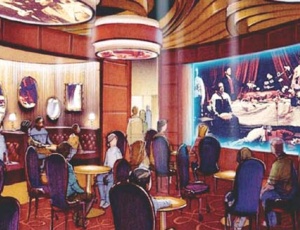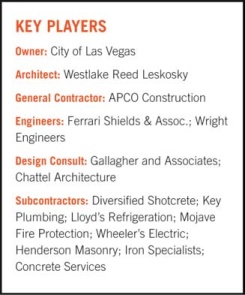A $50-million museum in downtown Las Vegas will examine America�s cultural fascination with organized crime and it�s impact on the city.

The three-story facility was a working post office until 2002. Three bays of mailboxes were salvaged and are being refurbished and reinstalled. Tickets will be sold out of the original post offi ce windows.
The 16-ft-tall by 60-ft-long lobby has terrazzo marble, travertine and granite fi nishes. New plaster, paint and crown molding are being installed.
�We are recreating the original construction with ornate hand-formed plaster ceilings and a marble tread stairway,� Nickerl says.
The ground level houses the building�s main 60-person courtroom, where the 1950-51 federal hearings on organized crime were held by U.S. Sen. Estes Kefauver of Tennessee. The 60-ft by 40- ft space will have wood paneling and benches and show a 25-minute film on the mob in Las Vegas. Courtroom walls will serve as projection surfaces.
The first floor will also contain the museum gift shop.
The second level features offices and another courtroom followed by more office space above. The areas are being transformed into 13,000 sq ft of permanent and temporary exhibition space, with audio and video displays as well as re-created environments. San Francisco based Gallagher and Associates designed the displays, exhibits and program spaces.

�We�re making improvements as inconspicuous as possible, especially in critical spaces,� Mather says. �It was a working building until the city took it over, so it had been well maintained.�
The museum is seeking LEED certification. Lead paint and asbestos tiles have been removed, and several existing building materials are being recycled.
A high-efficiency heating and cooling mechanical system is being installed that enables energy monitoring and zone climate control. No-VOC paints and glues are being used.

Post a comment to this article
Report Abusive Comment